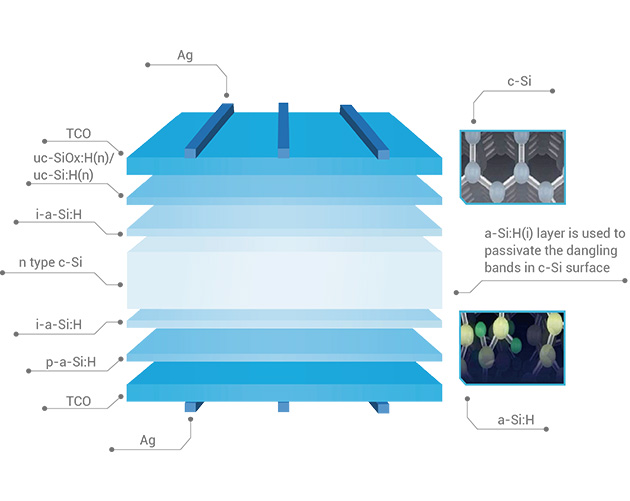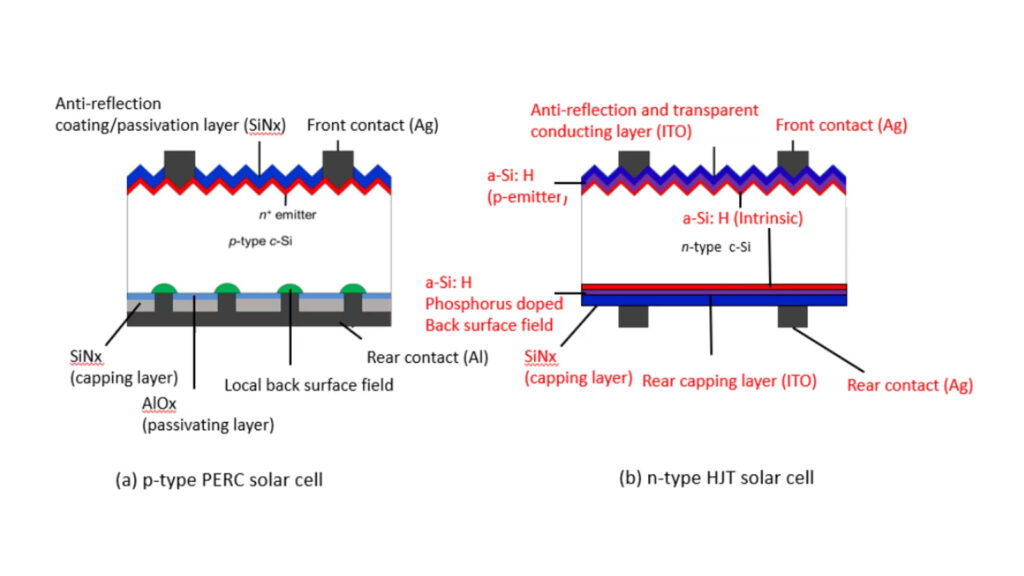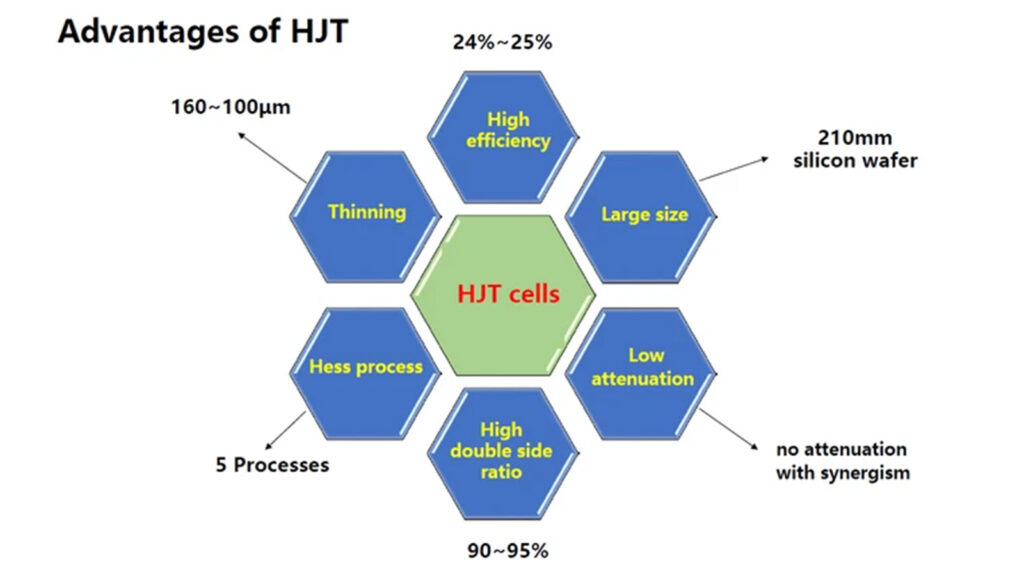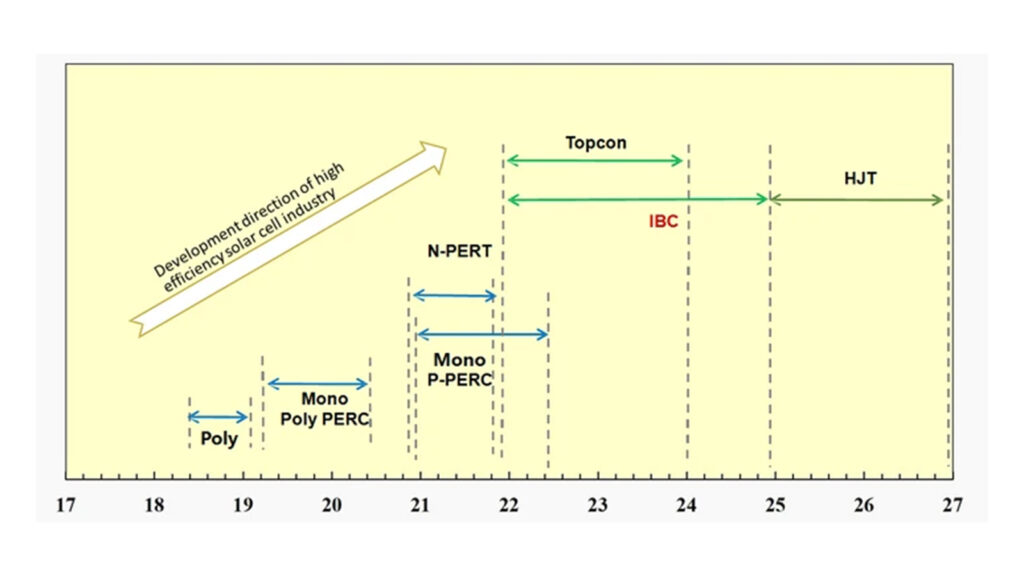Do You Know Heterojunction Technology (HJT) Solar Panels?

What is HJT technology? Heterojunction technology (HJT) is a N-type bifacial solar cell technology, by leveraging N-type monocrystalline silicon as a substratum and depositing silicon-based thin films with different characteristics and transparent conductive films on the front and rear surfaces respectively.
Combining with the benefits of crystalline silicon and amorphous silicon thin-fim technologies, HJT technology has excellent photoabsorption and passivation effects, as well as outstanding efficiency and performance. HJT panels are one of the technologies to improve the conversion rate and power output to the highest level, also represent the trend of the new generation of solar cell platform technology.
Why choose solar panels with HJT technology?
1. High conversion efficiency:
The homojunction cell type used in PERC technology uses crystalline silicon for the PN junction. Compared to conventional crystalline silicon solar cells using PERC technology, HJT solar panels are unique. HJT is a junction composed of two unique semiconductor substances.
It functions similarly to conventional solar cells, but the HJT cell is more effective at converting sunlight into electricity thanks to a thin layer of amorphous silicon.Currently, the average PERC efficiency of many PV manufacturers is over 22%, and the average HJT efficiency is over 22.5%.
In addition, HJT solar cells are made to have a module bifaciality of over 93%, which means they can produce electricity from both sides of the module. For instance, the Swiss company Ecosolifer has created a commercial bifacial HJT solar cell with a 24.1% efficiency.

2.Low temperature coefficient:
Compared to conventional crystalline silicon cells, thin-film solar energy produced by HJT solar panels has a lower temperature coefficient. At temperatures below 200 °C, HJT solar panels have an efficiency of over 23%.
Additionally, they have a low temperature coefficient of -0.2%/K, which boosts the efficiency and output of photovoltaic systems while lowering their cost.
This indicates that HJT solar panels can function effectively even in warm environments, enabling them to generate more energy in hotter environments. As a result, large-scale power generation using these high-performance cells is made possible.
3. Fewer production steps:
HJT solar panels are produced with fewer process stages than conventional solar panels made with PERC technology, which facilitates a smoother production process. HJT solar panels require only 8 processes for the production of solar photovoltaic modules as opposed to the roughly 13 processes needed by PERC technology. As a result, it is becoming more financially feasible, which is encouraging for the development of solar energy. This is because the price of the required equipment is continuing to drop.

4. Long service life:
HJT solar panels are renowned for their toughness, which means they last longer and require less upkeep, which lowers costs. The typical lifespan of solar panels is 25 years. However, under normal circumstances, HJT solar panels can last up to 30 years.
This is due to the protective barrier function of the amorphous silicon layer, which slows degradation and prevents the emergence of the PID effect. HJT batteries have a longer life as a result.

What is the HJT technology’s development trend?
The market’s most well-liked and desirable solar cell technology is PERC technology. It is regarded as the least complicated option because upgrading the production line only necessitates the addition of new machinery. The production of HJT solar panels, however, necessitates the acquisition of an entirely different set of production tools.
When it comes to solar cell development, HJT solar panels are far more effective and sophisticated than solar panels using PERC technology. Because of the high power generation efficiency of HJT solar panels, cell manufacturers and suppliers are becoming more and more interested in them. The future market will determine customer preferences, which will be a major factor in the development of HJT solar panels.
The solar industry is undergoing a revolution thanks to HJT (Heterojunction) technology, which increases energy output while also improving efficiency. To get around the drawbacks of conventional solar panels, HJT solar panels combine amorphous and crystalline silicon layers. This makes a variety of solar energy applications possible.